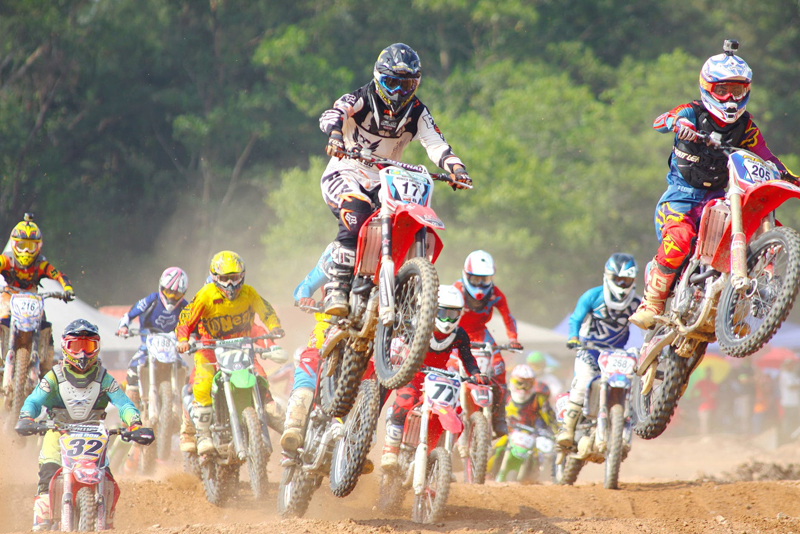Malaysia Preview

With many unanswered questions remaining after Melbourne, the race at Sepang looks set to provide some answers, such as how the tires will perform in the heat, and with rain predicted throughout the weekend, how the soft compounds will perform. The scare stories during winter testing may prove more truth than trumped up. Additionally, DRS may prove more influential given the track design's two long straits.
Much of the pavement in Melbourne is smooth compared to Sepang, seeing Melbourne is a mixed track (part street, part track). The asphalt at Sepang is rough, and old as well, and is much harder on the tires. Pirelli's motorsport director, Paul Hembrey, thinks the debut in Formula 1 at Melbourne went well, and that two to three pit stops were expected, but in Malaysia that figure will likely increase to three or four. The Italian tire company is providing two extra sets of experimental hard compound slicks for Friday practice, a move some see as an insurance policy against durability issues with the intended hard compounds.
The track at Sepang is one of the most technical of the season, beginning with a 180 degree turn at T1, and a variety of tight and flowing corners. It has a rhythm that leads from one corner to the next, with T5 and T6 both very fast. Speeds slow through T9, which is a real test of traction, then speeds increase in to T11. While the track is not hard on the brakes, the design punishes the tires.
Most teams expect the moveable rear wing will likely have a greater influence this weekend, given the circuit's two long straits. Compared to the one start-finish strait at Melbourne, the drivers at Sepang could have the opportunity to use the drag resistance system in two overtaking scenarios: one long strait out of T14 which then connects to a slightly longer strait out of the hairpin at T15. Thinking back to Button's use of the DRS at Melbourne, it provided a bit of excitement (or simply ended the anticipation), but left most spectators underwhelmed. Two chances might spice things up spectators..
The FIA has yet to announce a DRS policy for the race, however some drivers, Massa for example, have expressed concern about overuse of DRS, thus making passing too easy on an already overtaking-friendly track. Others, noting the only competitive use in Melbourne, think that too much passing will not be an issue. Button has been equally vocal about his position in favor of the DRS, and looks forward to using it again.
Sepang weather is known for its oppressive heat and with rain predicted, it should make for some exciting racing for fans, but enormous stress for the teams.
Some may recall the 2009 race ending after just 31 of 56 laps due the torrential rain. Hopefully that scenario will not play out again, but we are surely in for a good race.
Much of the pavement in Melbourne is smooth compared to Sepang, seeing Melbourne is a mixed track (part street, part track). The asphalt at Sepang is rough, and old as well, and is much harder on the tires. Pirelli's motorsport director, Paul Hembrey, thinks the debut in Formula 1 at Melbourne went well, and that two to three pit stops were expected, but in Malaysia that figure will likely increase to three or four. The Italian tire company is providing two extra sets of experimental hard compound slicks for Friday practice, a move some see as an insurance policy against durability issues with the intended hard compounds.
The track at Sepang is one of the most technical of the season, beginning with a 180 degree turn at T1, and a variety of tight and flowing corners. It has a rhythm that leads from one corner to the next, with T5 and T6 both very fast. Speeds slow through T9, which is a real test of traction, then speeds increase in to T11. While the track is not hard on the brakes, the design punishes the tires.
Most teams expect the moveable rear wing will likely have a greater influence this weekend, given the circuit's two long straits. Compared to the one start-finish strait at Melbourne, the drivers at Sepang could have the opportunity to use the drag resistance system in two overtaking scenarios: one long strait out of T14 which then connects to a slightly longer strait out of the hairpin at T15. Thinking back to Button's use of the DRS at Melbourne, it provided a bit of excitement (or simply ended the anticipation), but left most spectators underwhelmed. Two chances might spice things up spectators..
The FIA has yet to announce a DRS policy for the race, however some drivers, Massa for example, have expressed concern about overuse of DRS, thus making passing too easy on an already overtaking-friendly track. Others, noting the only competitive use in Melbourne, think that too much passing will not be an issue. Button has been equally vocal about his position in favor of the DRS, and looks forward to using it again.
Sepang weather is known for its oppressive heat and with rain predicted, it should make for some exciting racing for fans, but enormous stress for the teams.
Some may recall the 2009 race ending after just 31 of 56 laps due the torrential rain. Hopefully that scenario will not play out again, but we are surely in for a good race.
This site needs an editor - click to learn more!
You Should Also Read:
Two Penalties From Australia
F1 2009, Australia GP
Hamilton Joins the GPDA
Related Articles
Editor's Picks Articles
Top Ten Articles
Previous Features
Site Map
Content copyright © 2023 by Katie Schwausch. All rights reserved.
This content was written by Katie Schwausch. If you wish to use this content in any manner, you need written permission. Contact
BellaOnline Administration
for details.


